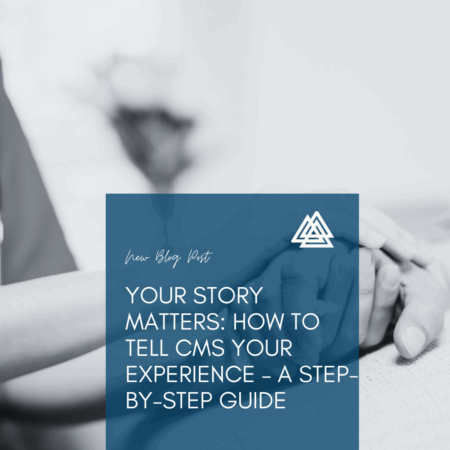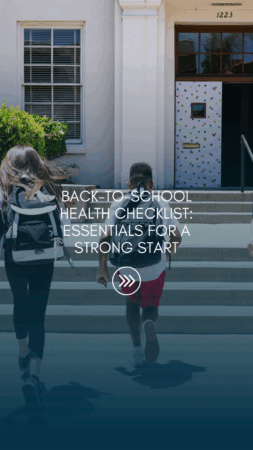Prism Post
Health Insurance Deductible Reset: What Patients Should Know
As the year comes to a close, many patients are focused on the holidays, family gatherings, and planning for the months ahead. One important detail that is easy to overlook, but can have a real financial impact, is your health insurance deductible.
Each year, most insurance plans reset deductibles on January 1st. That means even if you have already paid a significant amount out of pocket this year, your deductible balance often starts over when the new year begins.
For patients who rely on ongoing medical supplies, this reset can directly affect what they pay and when.
We often hear from patients early in the year who are surprised by higher costs, not because their needs have changed, but because their deductible has quietly reset.
Taking a few minutes to understand where you stand before the end of the year can help you plan ahead and avoid unnecessary stress.
This article explains what a deductible reset means, why timing matters for medical supply reorders, and how being informed can help you make confident decisions for both your health and your budget.
What Is a Health Insurance Deductible and Why Does It Reset Each Year?
A deductible is the amount you pay out of pocket for covered healthcare services before your insurance begins to share in the cost. Once you meet your deductible, your plan typically covers a larger portion of approved services, depending on your specific coverage.
Many insurance plans, including Medicare Advantage and most commercial plans, operate on a calendar year. This means the deductible resets on January 1.
In practical terms, this often means that costs feel more manageable toward the end of the year, then suddenly feel higher again in January. For patients who use medical supplies on a recurring basis, that shift can be frustrating and confusing, especially when nothing about their health has changed.
How a Deductible Reset Can Affect Medical Supply Costs
If you use ongoing medical supplies, you likely follow a regular reorder schedule. What many patients do not realize is that the timing of those reorders can influence how much they pay.
If you have already met your deductible, your insurance may currently be covering most or all of your eligible supply costs. Ordering before December 31 can sometimes mean lower out of pocket expenses compared to waiting until January.
If you are close to meeting your deductible, a year end reorder may help you move closer to that threshold, potentially reducing what you owe for other healthcare services before the year ends.
Once January arrives and the deductible resets, many patients find themselves paying more upfront again. This can be especially stressful when supplies are needed consistently and cannot simply be delayed.
Does Medicare Have a Deductible Reset?
Medicare coverage works differently than many private insurance plans, but deductible resets still apply.
Original Medicare Part B
Medicare Part B typically includes an annual deductible, followed by coinsurance, often 20 percent of the Medicare approved amount. Coverage for supplies that are medically necessary and prescribed by a healthcare provider follows CMS guidelines, which determine what is covered, how often items can be reordered, and what documentation is required.
We know these rules can feel overwhelming, especially at the end of the year. Many patients worry about ordering too much, ordering too early, or doing something incorrectly. Asking questions before placing an order can help ease that concern.
Medicare Advantage Plans
Medicare Advantage plans follow CMS coverage rules but may have different deductible amounts or cost sharing structures. Most plans reset benefits on January 1.
Because plans vary, patients enrolled in Medicare Advantage often benefit from reviewing their deductible status before the year ends, rather than assuming coverage will work the same way in January.
Why Providers Encourage Year End Supply Reviews
Patients sometimes wonder why healthcare facilities and supply providers send reminders toward the end of the year. These reminders are not meant to pressure patients or rush decisions.
They are meant to help prevent avoidable gaps in care, reduce unnecessary out of pocket costs, and support continuity during a busy season when reorders can be delayed.
From wound care to diabetes management, consistent access to supplies helps patients maintain routines, avoid complications, and feel more confident managing their health at home.
Medical Supplies That May Be Eligible for Year End Reorders
Depending on your coverage and medical needs, year-end reorders may apply to supplies such as:
- Blood glucose meters, test strips, and lancets
- Continuous glucose monitoring supplies
- Wound care dressings and related accessories
- Ostomy supplies
- Urological supplies
- Enteral nutrition supplies
- Durable medical equipment accessories
Coverage rules and reorder frequency vary. A brief check with your care team or supplier can help clarify what may be eligible before the year ends.
Why Understanding Your Deductible Helps You Advocate for Yourself
Understanding your deductible is not just about finances. It is about feeling prepared.
When patients know where they stand with their deductible, what supplies they are eligible for, and how timing affects coverage, they are better equipped to make decisions that support both their health and their budget.
This awareness is especially helpful during the holidays, when routines change and healthcare tasks can easily be postponed.
What You Can Do Right Now Before the Deductible Resets
If you are unsure where to start, a few simple steps can help you prepare.
First, check your deductible status through your insurance portal or by calling your plan directly. Then take a moment to review your current supplies and note what you may need to reorder soon.
If questions come up, reaching out to your healthcare provider or supply provider can help clarify eligibility and timing. If approved and needed, placing orders before December 31 may help reduce out of pocket costs.
Finally, understanding your deductible now can make it easier to plan for the new year with fewer surprises.
A Reminder About Individual Coverage
Insurance coverage can be complicated, and it is normal to feel unsure. Deductibles, copays, and coverage rules vary by plan, and what applies to one patient may not apply to another.
Confirming details directly with your insurance provider and asking your care team for guidance can help you feel more confident moving forward.
Supporting You Through the Year Ahead
At Prism, we believe that informed patients are better prepared patients. Understanding how deductible resets work, and how timing affects coverage, can make a meaningful difference in both peace of mind and continuity of care.
As the year wraps up, taking a few minutes to review your coverage and supplies can help prevent delays, stress, and unexpected costs in the months ahead. If questions arise, your healthcare facility or supplier is there to help guide you.
Planning ahead does not change your health needs, but it can make managing them feel more manageable.
Preparing 2026 Wound Care Protocols for Hospital at Home Models
Wound-care teams are entering one of the most challenging operational periods in recent years. Hospital at home models continue to shift because of policy uncertainty, staffing strain, documentation demands, and reimbursement pressure.
Wound care is often the service line that feels these changes first. What worked in 2022 or 2023 is no longer enough.
Clinical leaders now face larger and more complex questions. These decisions go far beyond supply lists or visit cadence. They shape safety, documentation integrity, and the entire workflow around hybrid care.
- What wound-care services can safely move into the home?
- What must remain on-site?
- How do teams maintain compliance in two environments that operate very differently?
This guide offers a practical and forward-looking approach for preparing protocols that support safety, compliance, and continuity of care in 2026. It reflects the realities wound-care teams are navigating and operational support Prism provides to help reduce friction.
Hybrid wound care is no longer an extension of the old model. It is quickly becoming the foundation of the next one.
The New Reality of Home-Based Wound Care
Hospital at home programs expanded quickly during the public health emergency. As extensions tighten and funding questions grow, health systems are reassessing which clinical responsibilities can safely shift outside the facility.
Wound care continues to be one of the most complex areas to decentralize. Across the industry, wound-care teams have been running into similar challenges.
- Slower entry into home-care pathways
- More caution around which wounds are safe for home management
- Rising documentation expectations due to audit exposure
- Increased pressure to maintain supply consistency
- The workload of keeping home-visit notes aligned with facility EMRs
These issues reshape the basic questions wound-care teams must answer.
- Which wounds have predictable healing trajectories in the home setting?
- What escalation triggers must be standardized?
- What caregiver skills are required for safe healing?
- Do our workflows and documentation systems hold up under audit conditions?
Many nurses note that the hardest part is not the dressing change. It is making sure images, notes, and measurements all sync into two systems that do not always communicate cleanly.
Preparing for 2026 requires acknowledging this reality and building workflows that protect both clinical quality and operational consistency.
Documentation & Compliance in Hybrid Care
Compliance expectations for wound care have increased across all care settings. CMS continues to emphasize measurable improvement, vascular assessment, and proof that standard care was completed before advanced therapies are introduced.
Hybrid care magnifies these pressures. Clinicians must meet identical documentation standards in two very different environments. Home-based care often introduces additional unpredictability that documentation must overcome.
Across the field, several themes continue to surface:
- Measurable improvement at every encounter
- Required vascular assessment for appropriate wound types
- Four weeks of standard care before advanced products
- Documentation that mirrors LCD language
- Consistent wound photography and measurement habits
- Clear justification for why home-based care is safe
- EMR notes that align between home and facility workflows
These expectations often collide with real-world hurdles. It is common to see clinicians juggling multiple systems or manually correcting documentation gaps left by the constraints of home care. Structured documentation support is also becoming essential:
- Templates that mirror LCD requirements
- Patient and caregiver resources written in plain language
- Standard checklists that reduce measurement errors
- Clear workflows that reduce missed information
With the right systems in place, documentation becomes a stabilizing force rather than a barrier.
Rethinking Wound Care Protocols for a Hybrid Environment
Teams preparing for 2026 are not simply adding new steps. They are redesigning protocols so that every step reduces cognitive burden and supports predictable decision-making.
The goal is to create workflows that function smoothly in the unpredictability of hybrid care.
A. Patient Selection Based on Predictability
The safest home-based wound programs rely on predictable wound types and patient profiles. These cases commonly include:
- Venous leg ulcers with stable edema
- Diabetic foot wounds without ischemia
- Stage I and Stage II pressure injuries
- Post-surgical wounds with low complication risk
These clinical characteristics appear consistently across high-performing programs and help define safer home-care pathways.
B. Clear & Consistent Escalation Triggers
Unclear or inconsistent escalation is one of the leading sources of delay in hybrid wound care. Teams are benefiting from unified escalation triggers that remove guesswork.
Common escalation triggers include:
- No improvement after four weeks of standard care
- Sudden changes in drainage, depth, or tissue appearance
- Signs of infection or ischemia
- Caregiver challenges or non-adherence
- Safety or home-environment concerns
When escalation triggers are clear, every member of the care team knows when in-person evaluation is required. This reduces risk, protects compliance, and prevents avoidable deterioration.
C. Remote Care Support That Works in Practice
Support in wound care is only successful when image capture and communication are consistent. Many teams across the field have reported two of the most common challenges are orders mismatching the prescribing practitioner’s records and inconsistent wound photography.
Every detail (product type, quantity, diagnosis, limb location) must align exactly with what appears in that record for coverage to be approved. Without that, delays are inevitable. Different caregivers also may use different phones and lighting.
These issues can affect clinical assessment and documentation quality. Supportive remote-care infrastructure typically includes:
- Rechecking measurements and garment descriptions
- Systems that allow rapid supply adjustments
- Verify diagnosis codes
- Tools that support accurate and repeatable assessments
- Ensure order and record language match
When these workflows are in place, remote monitoring becomes a reliable extension of facility care.
D. Documentation Templates Designed to Reduce Risk
Documentation becomes significantly easier when expectations are clear, and templates reflect real-world care. Many wound-care teams are now relying on:
- LCD-aligned templates
- Standardized wound-assessment checklists
- Home-care protocols that align with EMRs
- Consistent measurement guidelines for length, width, depth, undermining, and exudate
Clarity reduces errors. It also makes documentation more manageable for teams who already carry heavy workloads.
Prism’s Role in Stabilizing Continuity of Care
Wound-care programs rely on stable logistics, clear education, and consistent documentation support. Prism provides operational and clinical resources that reduce workload for both facility and home-care teams.
Reliable Delivery & Supply Chain Coordination
Reliable access to dressings, wraps, antimicrobial products, and advanced kits is essential. Timely delivery prevents gaps in care, which is especially important when patients receive treatment across two settings.
Education That Lightens the Clinical Workload
Clear education improves patient understanding and reduces unnecessary questions and follow-up calls. This supports clinicians and strengthens patient adherence.
Prism offers:
- Patient-friendly wound-care instructions
- A plethora of educational resources online
- Specialized support for complex coverage for patients and/or clinicians
These materials reinforce and extend clinical guidance, allowing patients to receive support efficiently, while also giving facilities peace of mind.
Documentation Support That Holds Up Under Audit
Prism helps teams maintain documentation that is:
- Aligned with LCD expectations
- Audit-ready
- Consistent across care environments
This support strengthens confidence and reduces avoidable risk.
Workflow Integration That Reduces Gaps
Prism coordinates supply fulfillment and transitions between facility care and home care. This reduces delays, minimizes complications, and supports smoother healing trajectories.
The 2026 Wound Care Readiness Framework
Wound-care leaders can use this framework to assess their readiness for 2026.
-
Clinical Safety
- Clear patient-selection criteria
- Standard escalation triggers
- Consistent measurement and photography
-
Workforce Sustainability
- Reduced documentation burden
- Patient and caregiver tools that improve adherence
- Workflows that reduce rework
-
Compliance Integrity
- LCD-aligned documentation
- EMR alignment across settings
- Measurable improvement at every encounter
-
Operational Consistency
- Reliable supply chain
- Support for rapid plan changes
- Clear communication loops
-
Patient Experience
- Consistent guidance
- Clear expectations
- Support between visits
If two or more categories show gaps, teams should consider updating protocols before 2026.
A 2026 Action Plan for Wound Care Teams
- Reassess patient-selection criteria
- Refresh escalation pathways for hybrid care
- Strengthen documentation practices
- Validate supply-chain readiness
- Monitor and measure outcomes consistently
These steps help teams stay ahead of regulatory and operational demands.
Conclusion
The wound-care landscape continues to evolve. Policy changes, staffing realities, hybrid workflows, and audit demands require wound-care teams to rethink how care is delivered across facility and home settings.
You are not imagining the strain. Wound care is asking more of clinicians than ever before.
Prism provides clinical insight, documentation-ready tools, patient education, and reliable logistics that help stabilize hybrid workflows. We support wound-care teams so that they can focus on healing and safety wherever care occurs.
Care does not stop at discharge. Neither do we.

If you have ever felt swelling, heaviness, or tightness in your arm or leg after surgery, treatment, or an illness, you may have wondered…
“Is something wrong with me?”
For some, these sensations can be early signs of lymphedema, a condition that many people live with quietly before finding answers.
If this is you, you are not alone.
Lymphedema happens when the lymphatic system, which helps drain fluid and fight infection, cannot handle its normal workload. As a result, fluid builds up, causing swelling, discomfort, and changes in how your limb looks and feels. Worldwide, an estimated 140 to 250 million people live with lymphedema, though the real number may be higher. In the United States, between 3 to 5 million people are thought to be affected.
Understanding your condition gives you power. When you know what is happening in your body and how to manage it, you gain confidence and control. Below, we will walk through:
- What lymphedema is
- How to spot it early
- How daily care & community can make a difference
What Is Lymphedema?
Lymphedema is a chronic condition where excess lymph fluid collects in tissues, leading to swelling, skin changes, and sometimes discomfort or pain. It can develop in an arm, leg, or other area of the body.
Types of Lymphedemas
Primary lymphedema develops when the lymphatic system has structural or functional problems that may be present at birth or appear later in life. Secondary lymphedema occurs when lymph vessels or nodes are damaged by surgery, radiation, trauma, or infection.
In countries like the United States, secondary lymphedema is most often linked to cancer treatment. Research suggests that about one in five women treated for breast cancer will develop lymphedema afterwards. For many people, that connection to cancer or other serious illness adds another layer of emotional strain. After finishing treatment, patients often look forward to recovery and normal life again.
When lymphedema appears months or years later, it can feel like a painful reminder of what they have already endured. The visible swelling and daily management routines can stir feelings of frustration, sadness, and even grief. Recognizing these emotions is part of healing too. Compassionate care means addressing not just the physical symptoms, but the emotional impact that follows major illness and recovery.
Because symptoms can develop slowly, many people experience delays in diagnosis. Early awareness helps you take steps before swelling becomes severe.
Recognizing Early Signs
In its early stages, lymphedema can be subtle. These are some of the signs and sensations to watch for:
- A feeling of tightness, heaviness, or fullness in your arm or leg
- Puffiness or mild swelling that worsens later in the day
- A limb that feels different in size or shape compared to the other
- Skin that seems firmer or less flexible
- Small indentations when pressing gently on the skin
- Aching, tingling, or discomfort without clear cause
Symptoms may come and go at first, which can make them easy to overlook. It is natural to feel frustrated when something feels off but looks mild. Still, early evaluation by a lymphedema therapist or clinician is one of the best ways to prevent progression.
Detecting and treating lymphedema early can reduce long-term discomfort and complications.
Managing Lymphedema: Treatment and Daily Care
There is currently no cure for lymphedema, but with consistent care, the condition can be managed successfully. Effective treatment reduces swelling, improves comfort, and protects long-term mobility.
Professional Lymphedema Care and Diagnosis
Your first step may be an assessment by a certified lymphedema therapist or medical specialist. They may take limb measurements or use diagnostic tools to establish a baseline and determine how much fluid buildup is present. The goal is to create a plan tailored to your needs and daily life. A common approach is Complete Decongestive Therapy (CDT), which combines several techniques:
- Manual lymphatic drainage (MLD) is a gentle form of massage that encourages lymph fluid to move toward healthier drainage pathways.
- Compression therapy involves using wraps, bandages, garments, or pumps to keep fluid from returning after treatment.
- Exercise and movement help stimulate circulation and maintain flexibility.
- Skin care and infection prevention protect against dryness, cracking, or irritation.
At Prism Medical, we work closely with care teams, providers, and caretakers to ensure every patient receives the right education and support. Our goal is to make treatment less intimidating and more manageable, so you can focus on feeling your best.
Compression Therapy & Lymphatic Drainage
Compression therapy remains one of the most effective tools for managing lymphedema. The gentle pressure helps move lymph fluid away from the affected area and prevents it from returning.
- In early phases, short-stretch bandages or multilayer wraps may be used to reduce swelling.
- Once the limb volume stabilizes, day garments or adjustable wraps help maintain results.
- In some cases, pumps or pneumatic compression devices may support home management.
- MLD continues to complement compression, easing tension and promoting comfort.
When it comes to Lymphedema, we often help patients find compression options that are both effective and comfortable. Fit and consistency play a massive role in helping patients stay on track with their care plan.
Daily Habits & At-Home Care
Daily habits reinforce what your professional care achieves. They also give you a sense of control over your condition:
- Wear your prescribed compression garments or wraps regularly.
- Keep skin clean and moisturized, and check for redness, warmth, or cuts.
- Stay active with gentle exercises like walking, stretching, or aquatic therapy.
- Avoid sitting for long periods without moving.
- Drink water throughout the day and maintain balanced nutrition.
- Contact your clinician if swelling increases suddenly or if you notice pain, warmth, or fever.
Consistency is what matters most. Even small steps each day contribute to better comfort and quality of life.
Finding Emotional Support & Community
Lymphedema is not just physical. It affects how you feel too. Many people describe feeling self-conscious, frustrated, or isolated as they adapt to a sudden and new lifelong care routines. In some cases, many patients finally overcome a tough battle with a deadly disease, only to discover they now must manage something new and unexpected. These feelings are valid and more common than you might think. Several organizations provide valuable education, advocacy, and peer support:
- The National Lymphedema Network offers resources, a provider directory, and community programs.
- The Lymphatic Education & Research Network promotes awareness and connects patients and families worldwide.
- The Lymphedema Advocacy Group helps patients understand their rights and supports insurance coverage efforts.
- Social media communities such as “Lymphedema Warriors” on Facebook and LE&RN’s online forums allow patients and caregivers to share lived experiences.
Connecting with others who understand what you are going through can make a real difference. Local support groups, online communities, and educational programs offer encouragement and shared experience. Hearing how others manage daily life with lymphedema often brings new ideas and hope.
Education and empathy go hand in hand and being part of a community can remind you that progress happens one day at a time.
We’re Here to Help
Living with lymphedema takes patience, but it is manageable. Some days will feel easier than others, and that is normal. With understanding, consistency, and the right support, you can protect your mobility, comfort, and confidence. At Prism, we are committed to guiding patients to the best coverage and quality of life possible. We see ourselves as partners, offering tools and guidance to thrive:
- Helping patients & clinicians understand coverage options.
- Industry leading turnaround time on supplies, top of the line educational materials, and clear instructions so patients feel cared for and clinicians have peace of mind.
- Advocating for all patients who come our way, regardless of if they are in and out of network.
Our commitment is simple. We’ll stand beside you with compassion and expertise so that you (and your physician) never have to manage lymphedema alone.
 Breast Pumps Through Insurance: What Moms Need to Know
Breast Pumps Through Insurance: What Moms Need to Know
Becoming a new mom comes with many changes—and making sure you have the right support tools can make all the difference. One of the most helpful resources available is a breast pump, and here’s the good news: most insurance plans cover the cost of a breast pump for new mothers.
At Prism, we make it simple to get the pump you need, without the stress.
Why a Breast Pump Matters
Breast pumps provide flexibility and peace of mind during your feeding journey. They can help you:
Maintain milk supply when away from your baby.
Return to work or school while still providing breast milk.
Share feeding responsibilities with your partner or caregiver.
Relieve engorgement or discomfort.
Whether you’re exclusively pumping, combining pumping with nursing, or just keeping one on hand, a breast pump can give you more control and freedom.
What’s Covered by Insurance?
Thanks to the Affordable Care Act, most insurance plans are required to cover the cost of a breast pump. Coverage may include:
Electric or manual breast pumps
Single or double pumps
Standard or hospital-grade options (depending on your insurance and medical needs)
Prism works directly with your insurance provider to help determine your coverage and ensure you get a breast pump that’s right for you—without the hassle of back-and-forth paperwork.
How to Get a Breast Pump Through Prism
We know new moms already have enough on their plates. That’s why we make the process simple:
Check Your Coverage – Fill out our quick online form or call us.
Choose Your Pump – Explore a variety of trusted brands and models.
Get It Delivered – We handle the insurance approval and ship your breast pump straight to your door.
Why Choose Prism?
Prism is more than just a supplier—we’re your partner in care. We:
Simplify the ordering process so you don’t have to chase insurance paperwork.
Offer a wide selection of pumps to fit your lifestyle and needs.
Provide fast, reliable shipping and support.
Because your journey as a mom should be filled with moments that matter—not frustration over supplies.
If you’re expecting or recently welcomed your baby, now is the perfect time to explore your breast pump options through insurance. Prism is here to help you every step of the way.
👉 Get started today at Prism-Medical.com and let us make this part of your motherhood journey a little easier.
#breastfeeding #momlife #newmom #breastpump #pumplife
 Why Hydration Still Matters After Summer Ends
Why Hydration Still Matters After Summer Ends
When September arrives, the calendar says fall—but the weather often clings to summer. Warm afternoons, busy schedules, and back-to-school routines create the perfect conditions for overlooked dehydration. Many people assume hydration only matters during the hottest months. The truth? Your body needs consistent hydration all year long.
Even as temperatures dip slightly, fluid loss continues through sweat, breath, and digestion. Add to that indoor climate control, which dries the air, and you have a recipe for dehydration that can sneak up on you during this seasonal transition.
The Hidden Impact of Dehydration
Mild dehydration doesn’t always announce itself with extreme thirst. Instead, it often shows up in subtle ways:
-
Fatigue or sluggishness
-
Headaches
-
Dry skin or chapped lips
-
Dizziness or lightheadedness
-
Muscle cramps
-
Difficulty concentrating
These symptoms can easily be mistaken for stress or fatigue from a busy schedule. In reality, they often point to inadequate hydration.
How Much Water Do You Really Need?
The “eight glasses a day” rule is a decent starting point, but it’s not a one-size-fits-all guideline. Your hydration needs depend on:
-
Body size and weight
-
Activity level
-
Climate and environment
-
Health conditions and medications
A helpful approach: aim for about half your body weight (in pounds) in ounces of water daily. For example, if you weigh 150 pounds, target roughly 75 ounces of fluids per day from all sources (water, beverages, and water-rich foods).
Everyday Hydration Tips for Late Summer and Fall
Staying hydrated doesn’t mean chugging gallons of water at once. It’s about small, consistent habits that keep your fluid levels steady throughout the day. Here are five practical strategies:
1. Sip Consistently, Not All at Once
Waiting until you feel thirsty puts you at a disadvantage—thirst often signals you’re already dehydrated. Keep a reusable water bottle nearby and take small sips regularly.
2. Add Electrolytes for Balance
Electrolytes like sodium, potassium, and magnesium help your body absorb and retain water effectively. After exercise, outdoor activity, or illness, consider electrolyte powders, tablets, or low-sugar hydration drinks.
3. Eat Water-Rich Foods
Fruits and vegetables can make up a significant portion of your fluid intake. Include foods like cucumbers, watermelon, oranges, strawberries, and celery in your meals and snacks for hydration plus nutrients.
4. Be Mindful of Caffeine and Alcohol
While coffee and tea contribute to fluid intake, they also have mild diuretic effects. Alcohol is even more dehydrating. For every cup of coffee or alcoholic beverage, drink a glass of water to maintain balance.
5. Customize for Your Lifestyle
Your hydration needs change based on activity level and environment. Athletes, outdoor workers, and frequent travelers require more fluids than someone sitting in an office. Use urine color as a simple indicator: pale yellow means you’re on track.
Hydration for All Ages and Stages
Kids
Between school, sports, and play, children can easily forget to drink water. Encourage hydration by:
-
Packing a reusable water bottle for school
-
Offering low-sugar electrolyte drinks on sports days
-
Providing hydrating snacks like oranges or grapes
Older Adults
As we age, thirst signals weaken, making it easier to become dehydrated. Older adults may also take medications that affect fluid balance. Encourage routine hydration with:
-
Herbal teas or flavored water
-
Hydration-friendly foods like soups and smoothies
-
Regular reminders to sip throughout the day
Individuals with Health Conditions
Those with kidney disease, heart conditions, or on diuretics should consult a healthcare provider for personalized hydration guidelines.
Electrolytes: The Missing Piece in Your Hydration Strategy
Water alone isn’t always enough—especially during physical activity, hot weather, or illness. Electrolytes are essential for maintaining fluid balance, nerve function, and muscle health. When to replenish electrolytes:
-
After extended exercise
-
During travel or long flights
-
Following illness with vomiting or diarrhea
-
After heavy sweating in warm conditions
Look for electrolyte supplements that are low in sugar and easy to mix into water for quick hydration support.
External Hydration: Why Skin Needs Attention Too
As seasons shift, your skin also experiences changes. Cooler air and indoor heating can sap moisture from your skin, leading to dryness and irritation. To keep your skin hydrated:
-
Use a gentle, fragrance-free moisturizer daily
-
Avoid overly hot showers
-
Consider adding a humidifier indoors during heating season
Hydration from within and proper skincare together help maintain a healthy, resilient skin barrier.
Hydration and Immunity: An Overlooked Connection
With fall comes the return of cold and flu season. Proper hydration plays a key role in immune defense. It helps transport nutrients to cells, flush toxins, and maintain moist mucous membranes in your nose and throat—your body’s natural barrier against pathogens.
Even mild dehydration can weaken this system, making you more vulnerable to illness. Staying hydrated is one of the simplest ways to support immune health as seasonal viruses circulate.
Hydration and Cognitive Performance
Whether you’re a student returning to class or a professional juggling a demanding schedule, mental clarity is essential. Research shows even a 1–2% decrease in hydration can impair cognitive function, affecting memory, focus, and mood. If you’ve ever felt foggy mid-afternoon, dehydration could be the cause.
Keeping your brain sharp is as simple as reaching for water consistently throughout the day.
Final Thoughts: Hydration Is a Daily Practice
As late summer transitions into fall, hydration should remain a top priority. It supports digestion, circulation, energy levels, and immunity—all of which affect how you feel and function each day.
Small steps make a big difference:
-
Keep a water bottle on hand
-
Include hydrating foods in meals
-
Replenish electrolytes when needed
-
Maintain skin hydration with proper care
Hydration isn’t a seasonal habit—it’s a cornerstone of wellness. Start today and carry these practices with you through every season.

The Complete Guide to Compression Wear: Why It’s More Than Just Socks
When you think of compression wear, what comes to mind? For many, it’s athletes crossing marathon finish lines or patients recovering after surgery. But compression garments have evolved far beyond those two worlds. Today, they’re recognized as powerful wellness tools that can help anyone—from office workers to frequent travelers—feel better, stay active, and maintain healthy circulation throughout the day.
This guide will walk you through everything you need to know about compression wear: what it is, how it works, who benefits from it, how to choose the right type, and practical tips for making it part of your lifestyle.
What Exactly Is Compression Wear?
Compression wear refers to specially designed garments—such as socks, stockings, sleeves, wraps, or even full-body pieces—that apply gentle, graduated pressure to specific areas of your body, most commonly the legs. This controlled pressure isn’t random; it’s carefully engineered to encourage better blood flow and lymphatic circulation.
How Does It Work?
Here’s the science in simple terms:
-
Blood Circulation: Your veins are responsible for returning blood back to the heart. Gravity makes this harder for blood traveling upward from your legs, and if your circulation isn’t efficient, blood can pool, leading to swelling, discomfort, or even varicose veins. Compression garments gently squeeze the limb, supporting veins and improving blood return to the heart.
-
Graduated Pressure: Most compression garments are “graduated,” meaning the pressure is strongest at the ankle and gradually decreases as it moves up the leg. This design maximizes circulation without restricting movement.
-
Swelling Control: By preventing fluid buildup in tissues, compression can reduce swelling (edema) and improve overall comfort—especially during long periods of sitting or standing.
-
Muscle Support: For active individuals, compression provides stability for muscles and joints, potentially reducing fatigue and soreness during and after exercise.
Why Is Compression Wear So Versatile?
Compression garments were once considered primarily medical tools, prescribed by doctors for conditions like deep vein thrombosis (DVT) or lymphedema. While they’re still essential in those cases, their benefits have reached mainstream wellness because improved circulation is something almost everyone can use.
Think of compression wear as a little helper for your circulatory system. Modern life often involves long hours at a desk, extended travel, or daily stress on the legs from standing jobs. Combine that with aging, pregnancy, or chronic conditions, and you have a perfect storm for tired, achy legs. Compression wear steps in to restore balance—quietly, comfortably, and effectively.
Who Can Benefit from Compression Wear?
The short answer: nearly everyone. But let’s break it down by lifestyle and health needs:
1. People Who Sit or Stand for Long Periods
Office workers, healthcare professionals, teachers, retail employees, flight attendants—these roles often involve being in one position for hours. Prolonged sitting can slow circulation, while standing can lead to blood pooling in the lower legs. Compression socks counteract these effects by promoting consistent blood flow.
2. Frequent Travelers
Ever experienced “heavy legs” after a long flight? Air travel increases the risk of swelling and even blood clots because of limited movement and cabin pressure changes. Compression socks are a simple way to keep your legs feeling light and safe during trips.
3. Athletes and Active Individuals
Compression gear is popular among runners, cyclists, and gym-goers for good reason. By improving blood flow and reducing vibration in the muscles, compression may help minimize soreness and speed up recovery after workouts. Some athletes also wear them during performance for added stability.
4. Pregnant Women
Pregnancy often brings swelling in the feet and ankles, especially during the later months. Compression stockings can provide welcome relief by reducing edema and supporting circulation. They’re also recommended to help prevent varicose veins during pregnancy.
5. Individuals with Chronic Conditions
Compression is an important part of managing several medical conditions, such as:
-
Lymphedema: Helps prevent fluid buildup in the tissues.
-
Varicose Veins: Eases discomfort and slows progression.
-
Deep Vein Thrombosis (DVT): Reduces the risk of dangerous blood clots.
-
Chronic Venous Insufficiency: Supports veins that struggle to return blood to the heart.
6. Post-Surgical Recovery
After surgery, particularly on the legs or abdomen, compression garments can aid healing by minimizing swelling and improving circulation. They’re commonly prescribed after procedures like vein surgery or orthopedic operations.
7. Anyone Who Wants to Feel Better
Even without a medical condition, compression can improve daily comfort. If you experience mild leg fatigue, ankle swelling after a long day, or just want extra support, compression socks can make a noticeable difference.
The Benefits of Compression Wear
Let’s explore the benefits in more detail:
-
Improved Circulation: Reduces the risk of blood pooling, swelling, and clot formation.
-
Reduced Swelling: Keeps fluid from accumulating in tissues, especially in the lower legs.
-
Enhanced Comfort: Relieves the feeling of heaviness or achiness in the legs.
-
Better Performance and Recovery: For athletes, compression can aid endurance and post-exercise recovery.
-
Prevention of Varicose Veins: Supports vein health and reduces stress on the venous system.
-
Lower Risk of DVT: Particularly helpful for travelers or those on bed rest.
Types of Compression Wear
Compression garments come in several forms, each suited for different needs:
-
Compression Socks and Stockings: The most common type, ideal for everyday wear, travel, and medical purposes.
-
Compression Sleeves: For arms or calves, often used in sports.
-
Compression Wraps: Adjustable wraps for more targeted compression, often used for lymphedema.
-
Pantyhose or Tights: Provide full-leg support, useful during pregnancy or for those who prefer complete coverage.
-
Post-Surgical Garments: Designed for recovery, often covering the torso or limbs.
How to Choose the Right Compression Wear
Choosing the right garment isn’t as simple as grabbing any pair off the shelf. The right fit and compression level are essential for comfort and effectiveness.
1. Compression Level
Compression is measured in millimeters of mercury (mmHg). Common ranges include:
-
Mild (8–15 mmHg): Best for everyday comfort, light swelling, or fatigue prevention.
-
Moderate (15–20 mmHg): Great for travel, mild varicose veins, pregnancy support.
-
Firm (20–30 mmHg): Often prescribed for medical conditions or post-surgery recovery.
-
Extra Firm (30–40 mmHg+): Reserved for severe cases and always under medical supervision.
2. Style
Pick what fits your needs:
-
Knee-high socks: Most popular for daily use and travel.
-
Thigh-high or pantyhose: For more extensive support.
-
Sleeves: Great for sports or arm conditions.
-
Wraps: Adjustable and customizable for medical use.
3. Sizing
Proper fit is crucial. Too tight and it’s uncomfortable; too loose and it doesn’t work. Always measure:
-
Ankle circumference
-
Calf circumference
-
Thigh (if needed)
-
Leg length
Follow the manufacturer’s sizing chart for accuracy.
4. Material
Comfort matters! Look for:
-
Breathable fabrics: To prevent overheating.
-
Moisture-wicking fibers: Perfect for active wear.
-
Soft, durable blends: For all-day comfort.
Tips for Wearing Compression Garments
-
Put Them On in the Morning: Legs are least swollen after a night’s rest.
-
Smooth Out Wrinkles: Bunching can cause discomfort and uneven pressure.
-
Wash Regularly: Keeps fabric elastic and hygienic.
-
Replace When Needed: Typically every 3–6 months, as elasticity decreases over time.
Common Myths About Compression Wear
-
“They’re only for old people.” Not true! People of all ages use compression for health, fitness, and travel.
-
“They’re uncomfortable.” With the right size and material, compression garments should feel snug, not painful.
-
“You need a prescription.” Many compression products are available over the counter for mild to moderate needs.
Making Compression Part of Your Lifestyle
Compression wear isn’t just for special occasions like long flights or race days. For many, it’s part of daily wellness—just like hydration or stretching. Whether you’re preventing discomfort, supporting recovery, or managing a medical condition, these garments can make a big difference in how you feel every day.
Final Thoughts
Compression wear is a simple, science-backed way to support your body’s natural circulation, reduce fatigue, and enhance comfort. It’s not a fad—it’s a tool for better living that fits seamlessly into modern life.
If you’re new to compression, start with a mild pair of knee-high socks and wear them during work or travel. Notice how your legs feel at the end of the day—you might be surprised by the difference.
Healthy legs mean a more active, energized, and confident you. And that’s something worth investing in.
For more information contact us.
 When it comes to healthcare, one size does not fit all. Patients depend on medical equipment and supplies that meet their specific health needs, preferences, and comfort levels. That’s why protecting brand choice is so important.
When it comes to healthcare, one size does not fit all. Patients depend on medical equipment and supplies that meet their specific health needs, preferences, and comfort levels. That’s why protecting brand choice is so important.
With the proposed changes to Medicare’s Competitive Bidding Program (CBP), patients may lose the ability to choose the brands and suppliers that work best for them. Here’s why that matters.
Every Brand Is Different—And So Are Patients
Medical equipment and supplies are not interchangeable. Small differences in design, size, or function can have a big impact on patient outcomes.
Diabetes Care: Some patients respond better to certain continuous glucose monitors or insulin pumps. Limiting brand choice could make it harder to manage blood sugar safely and comfortably.
Compression Therapy: The right fit, fabric, or brand can mean the difference between relief and daily discomfort.
Ostomy and Urological Supplies: Products vary in how they protect skin, prevent infection, and promote recovery. Patients often rely on specific brands their doctors know and trust.
Restricting access means patients may be forced into “whatever is covered,” even if it’s not what works for their condition.
What You Can Do
Patients and providers have the power to speak up. CMS is currently accepting comments on these proposed changes—but the deadline is August 29, 2025.
👉 Submit your comment here.
Every voice matters. By sharing your experience, you can help protect brand choice, preserve local access, and ensure patients get the care they deserve.
Your Care. Your Choice. Your Voice.
 When it comes to healthcare, no one knows the challenges better than the people living them every day. That’s why the Centers for Medicare & Medicaid Services (CMS) is asking for public comments on proposed changes to the Competitive Bidding Program (CBP).
When it comes to healthcare, no one knows the challenges better than the people living them every day. That’s why the Centers for Medicare & Medicaid Services (CMS) is asking for public comments on proposed changes to the Competitive Bidding Program (CBP).
These changes could affect your access to medical supplies, your choice of providers, and the quality of care you receive. Sharing your story is one of the most powerful ways to make sure your voice is heard.
Here’s how to do it.
Why Your Comment Matters
CMS uses public comments to understand the real-world impact of their decisions. Numbers and data only go so far—but your story shows the human side of healthcare policy.
Whether you’re a patient, caregiver, family member, or healthcare provider, your perspective helps shape how these rules are finalized.
What to Include in Your Comment
Think about how these changes could affect your care or your loved ones. You can share:
Your personal experience – Describe how access, affordability, or support has helped or hurt you in the past.
Your concerns – Explain what worries you most about reduced choice or access to supplies.
Your perspective as a caregiver or provider – Highlight the challenges you face in supporting patients.
Your comment doesn’t have to be long or technical—it just needs to be honest.
Step-by-Step: How to Submit Your Comment by August 29, 2025
1. Go to the Medicare comment page. Here
2. Click the green box that says “Submit a Public Comment.”
3. Write your comment in the text box – or upload a file in the “+ Add a File” green box.
4. Under “Tell Us About Yourself,” choose either “An Individual” or “Anonymous.”
5. Check the box confirming you’ve read and understand the statement.
6. Click “Submit Comment.”
That’s it! It only takes a few minutes, but your voice could make a lasting difference.
Every story matters. Every voice counts. By speaking up, you’re helping protect access, choice, and care for yourself and millions of others.
Your Care. Your Choice. Your Voice.
 When it comes to your health, having reliable access to the supplies and equipment you need is essential. But right now, changes being proposed by Medicare could make that harder through something called the Competitive Bidding Program (CBP).
When it comes to your health, having reliable access to the supplies and equipment you need is essential. But right now, changes being proposed by Medicare could make that harder through something called the Competitive Bidding Program (CBP).
So, what is it—and why does it matter to you? Let’s break it down.
What is Competitive Bidding?
Normally, Medicare pays suppliers (the companies that provide you with medical equipment and supplies) a set amount for certain items. With competitive bidding, suppliers are asked to “bid” against each other to win contracts. The lowest bids often set the prices.
At first, this might sound like a good idea—lower prices for Medicare. But here’s the catch:
Fewer suppliers win contracts.
Patients have fewer choices of who to work with.
Lower payments can mean suppliers can’t afford to keep offering the same level of service.
Why Does It Matter to You?
If these new rules go into effect, here’s what it could mean for patients, caregivers, and facilities:
Less Choice – Instead of being able to pick the supplier you trust, you may only be able to use the one Medicare contracted.
Access Delays – Fewer suppliers could mean longer wait times to get your supplies or equipment.
Reduced Services – With lower payments, suppliers may not be able to provide the same support.
New Product Categories – Items like insulin pumps and glucose monitors could be affected, making it harder for people managing diabetes to get what they need.
Why Speaking Up Matters
Your voice is powerful. Medicare is asking for public feedback before finalizing these changes, and comments are open until August 27th, 2025.
By sharing your story or concern, you help show how these changes could affect real people—not just numbers on a spreadsheet.
How You Can Take Action
Submitting a comment is quick and easy:
1. Go to the Medicare comment page. Here
2. Click “Submit a Public Comment.”
3. Write your comment (or upload a file).
4. Choose “An Individual” or “Anonymous” under “Tell Us About Yourself.”
5. Check the confirmation box.
6. Click Submit Comment.
Bottom Line:
Competitive bidding may save money on paper, but it comes at a cost to patients and caregivers. It can limit choices, create barriers to access, and reduce the level of care you depend on.
This is your chance to speak up: Your Care, Your Choice.
 As summer winds down and the school year approaches, it’s time to prep more than just pencils and notebooks. A strong start to the year begins with good health—we’re here to make sure you and your family are covered from head to toe.
As summer winds down and the school year approaches, it’s time to prep more than just pencils and notebooks. A strong start to the year begins with good health—we’re here to make sure you and your family are covered from head to toe.
Here’s our ultimate back-to-school health checklist to help students of all ages stay well, stay focused, and start the year off right:
✅ 1. Immune Support for a Healthier Classroom
Crowded classrooms and shared spaces can be breeding grounds for germs. Boost your child’s natural defenses with:
Daily multivitamins
Immune-boosting supplements
Hand sanitizers and wipes for on-the-go protection
✅ 2. Skin Care Essentials for Busy Days
From scrapes on the playground to breakouts from stress or sweat, skin care matters more than you might think.
Gentle cleansers for daily use
Moisturizers for sensitive or dry skin
Antiseptic wipes and bandages for minor injuries
✅ 3. Hydration Helpers for All-Day Energy
Staying hydrated supports focus, energy, and overall well-being—especially during warmer back-to-school days.
Reusable water bottles
Electrolyte-enhanced drinks or supplements
Hydration reminders or trackers for older students
✅ 4. Comfort Products for Confidence
Back-to-school can bring a mix of excitement and nerves. Help students feel their best with:
Compression socks for long school days or sports
Incontinence products for those who need discreet support
Comfort aids for anxiety or stress, like heating pads or calming lotions
✅ 5. Wellness Tools for At-Home Monitoring
Track health easily from home to catch small concerns before they become bigger issues.
Thermometers
Pulse oximeters
Pediatric care supplies
Because a healthy start is the best start.
#backtoschool #healthessentials #healthchecklist #schoolchecklist #prism #healthsupplies


